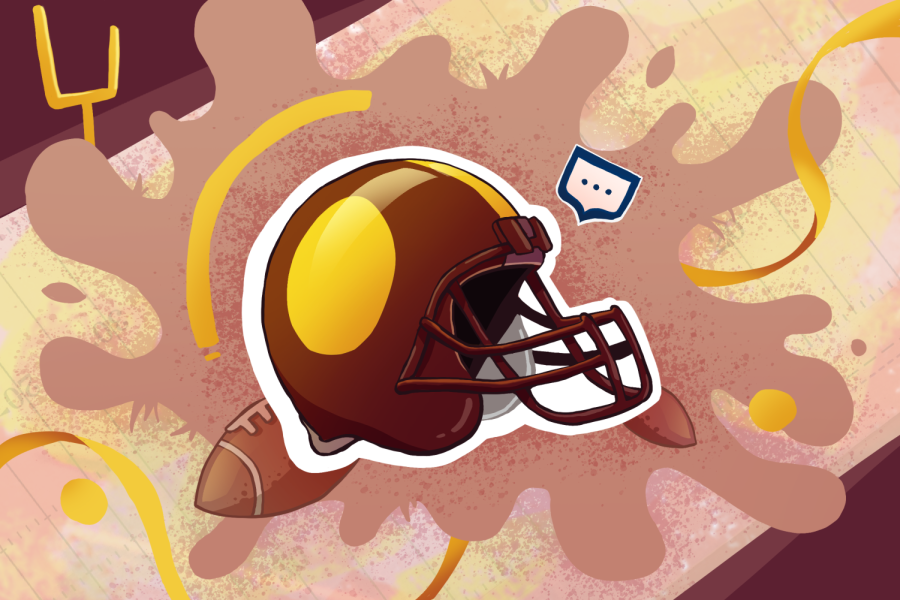A single pill can kill: social media increases access to drugs
October 26, 2022
Trigger Warning: pertains graphic language related to an overdose.
Some names have been changed to protect students’ privacy
At 6:00 a.m. on January 17, Marc Hausman found his 16 year-old son, sophomore Landen Hausman, lying on his bathroom floor, his face covered in blood. Landen was gone.
Just hours earlier, Landen had returned home from a ski trip and checked in with his parents. He seemed happy, his dad said. Moments later, he went into his bathroom, locked the door behind him, cut a straw in half, crushed a single pill and snorted it.
Marc stressed the necessity of sharing Landon’s story in a message on Linkedin a week after his son’s passing. In the post, he urged community members to share the non-romanticized account in full detail “with children, family and friends.”
“There is no shame in Landen’s death,” Marc wrote in the posting. “I just want to prevent this tragedy from befalling another family.”
Drug overdoses claimed 100,306 lives between April 2020 and April 2021 — the highest number of overdose deaths ever recorded in a single year in the United States. Seventy percent of these overdoses were caused by fentanyl, a synthetic opioid with the potential to be fatal in even minuscule doses. Although the Hausman family has yet to receive an autopsy report, police suspect the pill Landen took was laced with fentanyl, Marc said.
Contributing to the recent increase in overdose deaths among teenagers is the sale of fentanyl-laced pills purchased through social media, according to the United States Drug Enforcement Agency (DEA). Over the past decade, the drug market has shifted online where illegal drugs are available at the fingertips of social media users.
For junior Alex, obtaining access to LSD, shrooms, cocaine, Xanax, Percocet, methamphetamine and fentanyl was simple: open Snapchat and message her dealer.
“I started using drugs in January of 2020,” Alex said. “I would smoke weed almost every day, but other drugs it was less often, about once a week.”
Prescription pills that resemble Xanax, Percocet, Adderall or OxyContin but contain a dose of fentanyl, with or without the user’s knowledge, are abundant online. Forgers stamp these pills with an imprint, usually letters or numbers, to perfectly imitate real medication from a pharmacy. Telling the difference solely by observation is nearly impossible.
One hundred times stronger than morphine and 50 times more powerful than heroin, fentanyl’s potency increases still when combined with other drugs. According to the DEA, two of every five counterfeit pills seized by law enforcement contain lethal amounts of fentanyl.
On March 10, five West Point Academy cadets overdosed on fentanyl laced cocaine, four or whom were hospitalized. Two of the men had not ingested the drug, but still went into respiratory arrest after administering mouth-to-mouth resuscitation on two unconscious cadets.
An informal study conducted by the Organization for Social Media Safety found that a teenager can connect with a drug dealer through social media platforms and receive their “menu” of drugs for sale in under three minutes.
“Most of my friends do the same drugs,” Alex said, “so it was easy to find dealers on Snap who would sell to me, and most of them post what kind of drugs they have on their stories.”
Fentanyl, when legally prescribed, is used for pain management. Originally developed as a cancer treatment, doctors prescribe it as either a patch — applied to a patient’s skin — or in lozenge form. Due to its opioid properties, which include side effects like relaxation, sedation, pain relief and euphoria, fentanyl has become a substance in high demand for illegal abuse. The drug is predominantly manufactured in illicit labs in China and Mexico and then smuggled across the U.S. border — although the United States also houses some clandestine fentanyl manufacturing operations, according to the DEA.
Fentanyl is inexpensive to produce and distribute, adding to its widespread popularity. Usually sold between $20 to $40 per gram — considerably less compared to cocaine (around $110 per gram) and heroin (around $150 per gram). To increase its effects, manufacturers and dealers mix fentanyl with other drugs that can be smoked, swallowed, injected or snorted. However, users may not be aware they are buying a fentanyl combination product when attempting to purchase these other drugs. Only a small amount of fentanyl is needed to induce a high, and it is extremely addictive. Without an opioid tolerance, two milligrams of fentanyl, the equivalent to a few grains of salt, can be a deadly dose.
In October 2021, the United States Senate Commerce Subcommittee on Consumer Protection, Safety and Data Security held a hearing titled “Protecting Kids Online: Snapchat, TikTok and YouTube.” During the hearing, U.S. senators pressed senior executives from these three social media companies to answer questions about their efforts to protect children from drug dealers on their platforms — and whether the steps they have taken to date are effective. All three executives testified that their respective companies recognize the urgency of this issue and have implemented measures to ensure the safety of young platform-users.
“Over the last year, we have significantly strengthened our tools for proactively detecting drug-dealing activity and shutting down dealers, improved our support for law enforcement and educated Snapchatters about the fatal dangers of counterfeit pills laced with fentanyl,” said Rachel Racusen, Director of Communications at Snap inc.
Racusen detailed specific actions Snap has taken to address the fentanyl epidemic. Those include growing its in-house Law Enforcement Operations team by 74% to improve efficiency in responding to law enforcement requests for data related to their investigations and developing several in-app education resources. One takes the form of a portal called “Heads Up,” which trades search results for “drugs” for content from substance abuse experts . Additionally, Snapchat has begun broadcasting public service announcements along with a new series on its in-house news show “Good Luck America” about the dangers of fentanyl and counterfeit pills.
During the hearing, Senator Amy Klobuchar (D-MN) expressed skepticism about the effectiveness of Snapchat’s actions, stating that social media platforms might address this problem quicker if they were legally held liable for deaths caused by drugs purchased on their platforms.
Marc Berkman, Chief Executive Officer of the Organization for Social Media Safety, agrees.
“If you can prove that the platform was negligent or reckless in allowing the dealer to conduct the drug sale, then yes, the company should be held legally responsible,” Berkman said. “And I would say in most of these cases that we know about, the platforms could have done something to prevent the transaction.”
The Organization for Social Media Safety is currently lobbying Congress to pass “Sammy’s Bill,” legislation named after Sammy Chapman, a 16-year-old who died in February 2021 after taking drugs laced with fentanyl that he bought over Snapchat. The bill would require social media companies to integrate parent monitoring software, specifically sending alerts to parents if their children interact with harmful or illegal content.
Social media companies argue this violates users’ privacy guidelines and may also harm children who use social media as a safe place for support, such as young people who choose to “come out” on a social media app by sharing their sexual or gender identity, without worrying about their parents’ disapproval or adverse reaction.
In addition to legislative advocacy work, families who have lost children to a fentanyl overdose stress the need for more education about the dangers of drug use to both students and parents.
After losing her son to an overdose in March 2021, Dr. Beth Weinstock founded BirdieLight, an organization that spreads awareness about the dangers of fentanyl in drugs. BirdieLight supplies fentanyl test strips and narcan, an over-the-counter nasal spray that reverses the effects of opioids, and organizes trainings for high school and college students — both tools that are capable of preventing a fentanyl overdose.
“From my standpoint, education is the best way to address the fentanyl crisis,” Weinstock said. “BirdieLight is focused on the age demographic of 15-25. In the same way that we’ve provided sex education in the schools across the country and tried to teach everyone how to stay safe, we can also do that for avoiding fentanyl.”
Since over half of all U.S. teenagers log on to a social media site at least once a day, drug dealers are highly motivated to continue evading sites’ efforts to block them. The incredible volume of information posted on social media creates challenges in monitoring illegal activity, and drug dealers often use multiple platforms in the selling process — one site to market their drugs, one to message buyers and one to conduct sales.
Alex experienced Snapchat’s “crackdown,” she called it, as did a couple of her friends when their Snapchat accounts were suspended; however, this hasn’t prevented them from continuing to buy drugs post-suspension.
Weinstock understands that even with more awareness, improved technology and new laws, there will always be teenagers who continue to take risks and experiment with dangerous drugs. So, BirdieLight has set a goal to put a fentanyl test strip, with instructions attached, in the hands of every single high school and college student in America.
The strips determine whether or not a drug contains fentanyl. Weinstock’s hope is that young people will be increasingly cautious and decide to test all of their drugs — and to dispose of any drug that tests positive.
“My first message is that nobody takes anything these days because the stakes are so much higher than they’ve ever been,” Weinstock said. “But I also feel that message isn’t going to work for everyone — we still need to tell people if they are ever going to ingest a drug they test it first. This is a really heavy and dark message, but this is how dangerous ingestion of substances is in 2022.”
This story was published in print during the 2021-22 school year.








Marc Hausman • Oct 28, 2022 at 10:15 am
Hi there, this is Landen Hausman’s father. This is an excellent and well-sourced article. Two things as an update: 1) toxicology confirmed that Landen’s death was the result of Fentanyl poisoning; and 2) the dealer accused of selling Landen the counterfeit Percocet was indicted by the US Department of Justice on September 21, 2022 on the charge of “distribution of Fentanyl resulting in the death of a minor victim.” If there is not a plea agreement, I anticipate the case will go to trial in 2023.